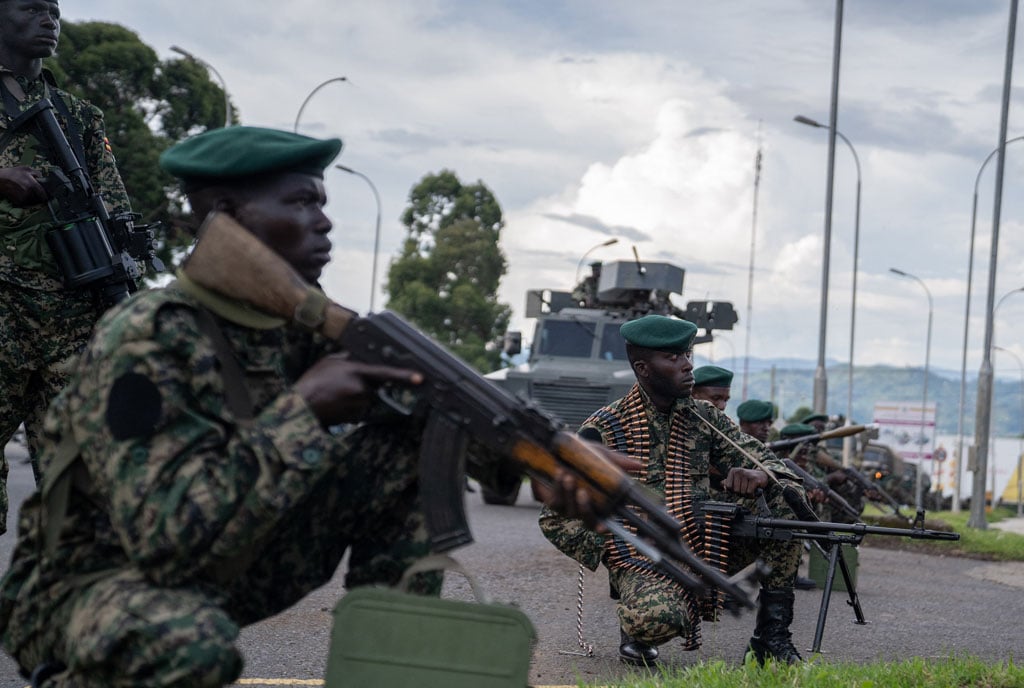Prime
UPDF: Evolution of army in Uganda

President Museveni inspects a guard of honour during the pass-out of soldiers last year. PHOTO/ABUBAKER LUBOWA
What you need to know:
- The UPDF Act was enacted in 2005 to establish and regulate the army, which the 1995 Constitution places as subordinate to civilian authority.
The formal organisation of a centralised military for a future Ugandan state began during the British colonial period under Col Henry Edward Colville who formed the six-company Uganda Rifles in 1895.
Before then, native kingdoms such as Buganda and Bunyoro had own formidable armies. However, alliance by the former aided, and resistance by the latter aided was inadequate to thwart, British conquest. The result: an eventual grafting of motley societies into present-day Uganda.
Col Colville’s Uganda Rifles morphed into a Battalion and was subsumed under 4 Kings African Rifles (KAR), and then 7 KAR, whose rank-and-file the British drew from colonies in East Africa.
It was constituted into a 2,319-strong Regiment whose enlistment a couple of years later, in 1914 when World War I started, had increased to about 32,000. By 1918, as WWI drew to a close, the Regiment was nearly 31,000-strong and comprised medical and engineering specialists as well.
The colonial army, by design, was to enforce the subjugation of the natives through tax compliance, labour extraction and macho law and order regime. Thus, brawny men, drawn mainly from northern Uganda, the country’s unofficial labour reserve during colonial era, were preferred and drafted into security forces.
The difference
The KAR fought on the side of Britain and its allies in both WW I and WW II before majority were demobilised, with some processed home through technical schools in the countryside where they gained life skills.
When Uganda attained independence on October 9, 1962, the Uganda Rifles (a component of KAR) was christened Uganda Army and its strength grew within three years from 700 to 6,250. Recruitment depended on physical girth, continuing a colonial-era pattern of drafting force personnel from northern Uganda.
The Defence minister superintended the post-independence army, which had better equipment and formation, while the Army Commander administered the institution through battalion commanders.
By the time Amin captured power in 1971, Uganda Army strength was 8,500, the base was largely illiterate or semi-illiterate. His ouster in April 1979 ushered in the Uganda National Liberation Army (UNLA) whose Establishment doctrine, military sources recount, adopted both British and Warsaw-Pact models.
Rebranding
In 1986, the Museveni-led National Resistance Army (NRA), renamed Uganda People’s Defence Forces (UPDF) in the country’s 1995 Constitution, removed the UNLA.
From a ragtag force, the NRA began a transformation into a conventional army from the early 1990s, with a highlight of mass retrenchment to rationalise several soldiers and equipment under a broader public sector reform dictated by the Bretton Woods institutions.
The defence underwent a major review between 2000 and 2004, which examined the capabilities and structures of the military, leading to the
The UPDF Act was enacted in 2005 to establish and regulate the army, which the 1995 Constitution places as subordinate to civilian authority.
Its core mission under the law is protecting the sovereignty and defending the territorial integrity of Uganda and, among others, to cooperate with civilian authorities and other state actors to handle non-military emergencies such as disasters.
The UPDF executes its roles through the different services: Land Forces, Air Force, Special Forces and Reserve Force.
Its revised Establishment document, which the Defence Council considered and approved on February 17, articulates the organisational structure with an identifiable boundary, rules and ranks of authority to improve command, control, communication and information to make the force more agile and enhance interoperability within and with partners and allies.




